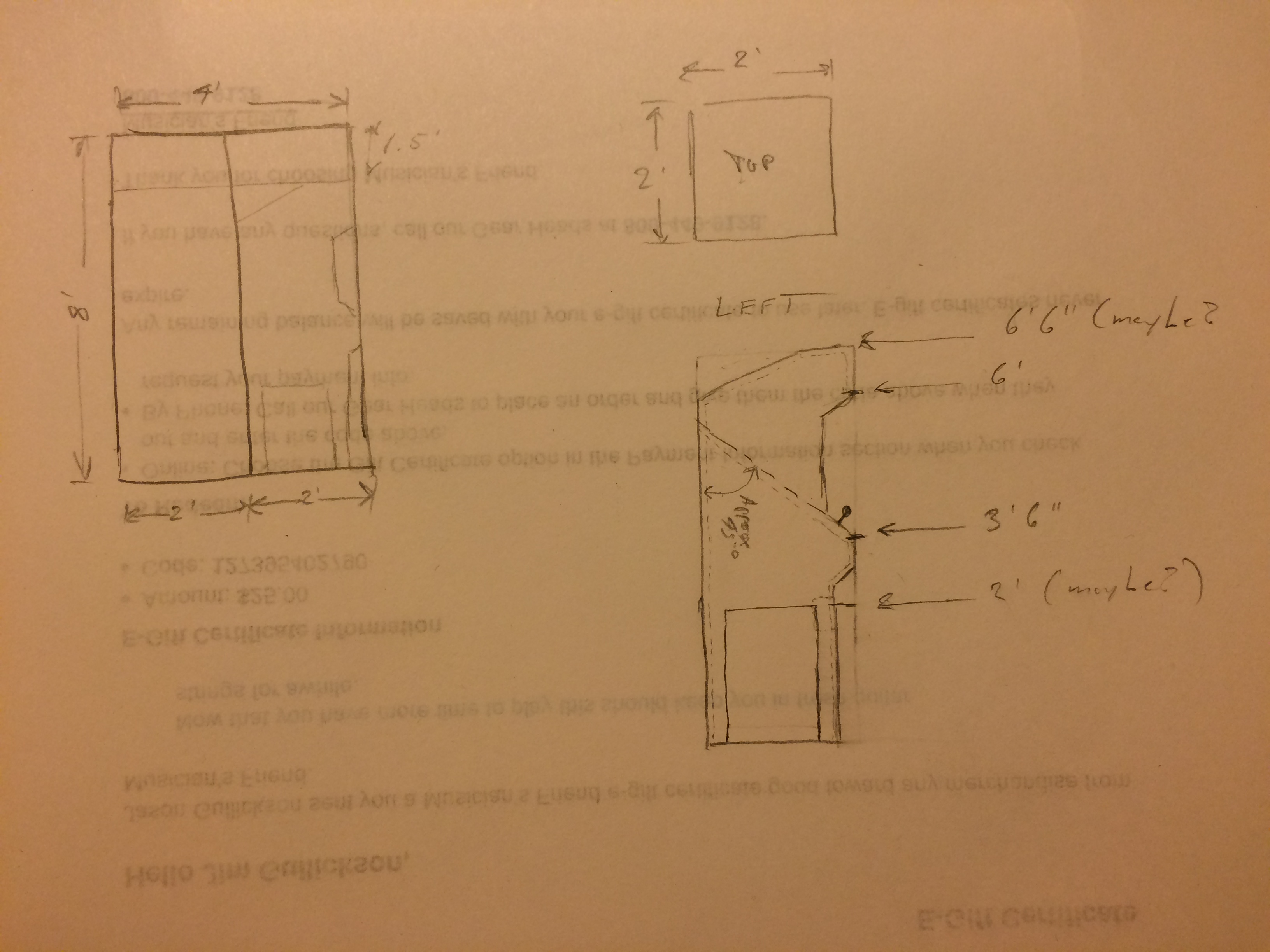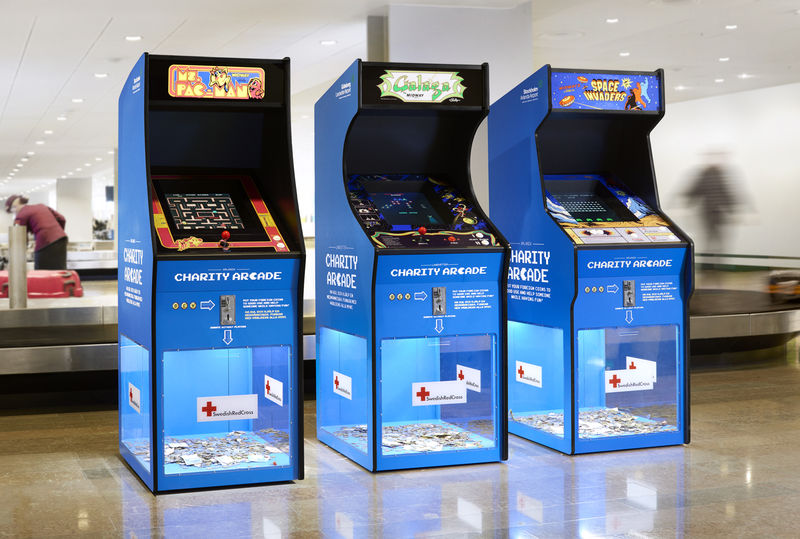Charity Arcade Machine
A year or so ago Jamie shared a link about a project in Sweden where modified video game arcade machines were placed in airports and used to collect money for charity. Being the philanthropic type, she wanted one to raise money for local charities. We weren’t able to find much more information about the project or how to obtain one of the machines, so of course we set out to build one ourselves.  In this series of posts I’ll document the process of researching, designing, building, testing and finally, putting the machine to use at an actual charity event. If you’d like to see the results in person we’ll be debuting the machine (assuming the project meets its deadline) at the Dodge County YMCA’s “Back to the 80’s” fund-raiser on April 29th, 2017. The machines from the original project are very similar to “classic” video game machines from the 1980’s. The only obvious difference is that the base of the machine is cut-away and replaced with transparent walls which make the funds collected visible.
In this series of posts I’ll document the process of researching, designing, building, testing and finally, putting the machine to use at an actual charity event. If you’d like to see the results in person we’ll be debuting the machine (assuming the project meets its deadline) at the Dodge County YMCA’s “Back to the 80’s” fund-raiser on April 29th, 2017. The machines from the original project are very similar to “classic” video game machines from the 1980’s. The only obvious difference is that the base of the machine is cut-away and replaced with transparent walls which make the funds collected visible.  We thought this was a nice touch, so our design incorporates this as well as few additional design goals:
We thought this was a nice touch, so our design incorporates this as well as few additional design goals:
- Overall cabinet size is reduced to make it more portable (i.e., fits in our Honda Element) while preserving the classic “feel” of vintage arcade games
- Cabinet design is optimized to be cut from two 4’x8’ sheets of plywood
- Incorporate an LED matrix display in the marquee area to display the amount of funds collected Regarding the electronics, there are a lot of options to choose from but ultimately we settled on using mostly off-the-shelf parts. There are are numerous reasons for this choice, but ultimately we hope this increases the chances that things will work out-of-the-box, and continue to work reliably in the field. While it was tempting to consider a more DIY option like using a Raspberry Pi and emulation, for this particular application (an 80’s party) we only needed a limited number of games, and the cost difference between the options was negligible. Also, we wanted to create a design that others could replicate without a lot of specialized knowledge. Here’s a list of the electronics hardware purchased so far:
- JAMMA 60 in 1 Multicade Arcade PCB (eBay, $55.99)
- JAMMA 60 in 1 controller kit w/ JAMMA connector (eBay, $39.00)
- Coin acceptor (eBay, $14.99)
- MAX7219 Dot Matrix LED module (1x4?) (eBay, $5.43) In addition to this we’ll need a VGA monitor, a power supply and an audio amplifier + speakers (if we want sound). We’ll also need an Arduino or something similar to drive the LED display (this is something I haven’t worked with before so I’m not exactly sure what it will take). These are things that I have in the parts bin so I shouldn’t need to purchase them for this build, but when the project is complete I’ll post a full list of all the parts that went into it (including the cabinet) with sources in case you want to make one yourself. Like everything else the plans, design files, etc. will be open-source and can be found in their Github repository.
